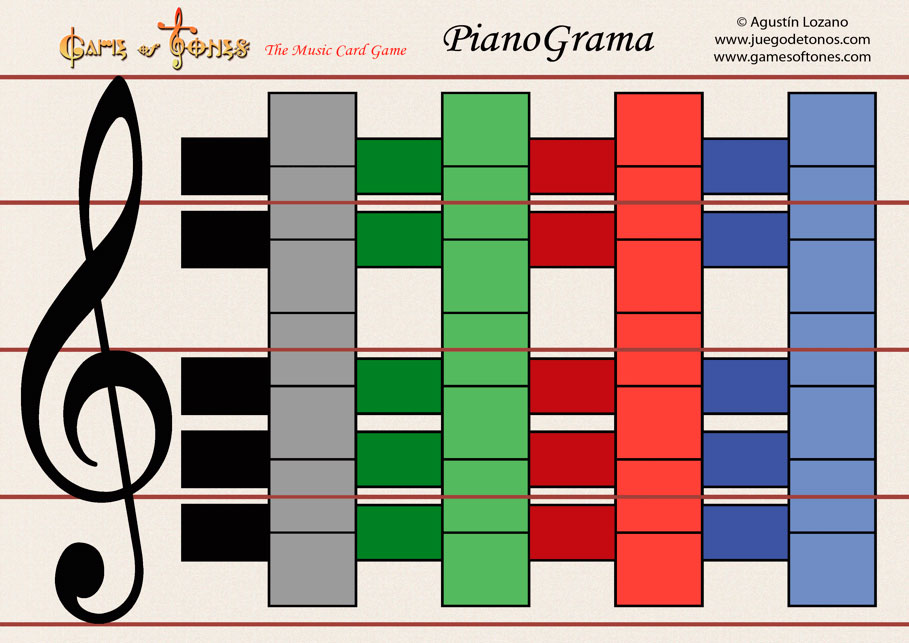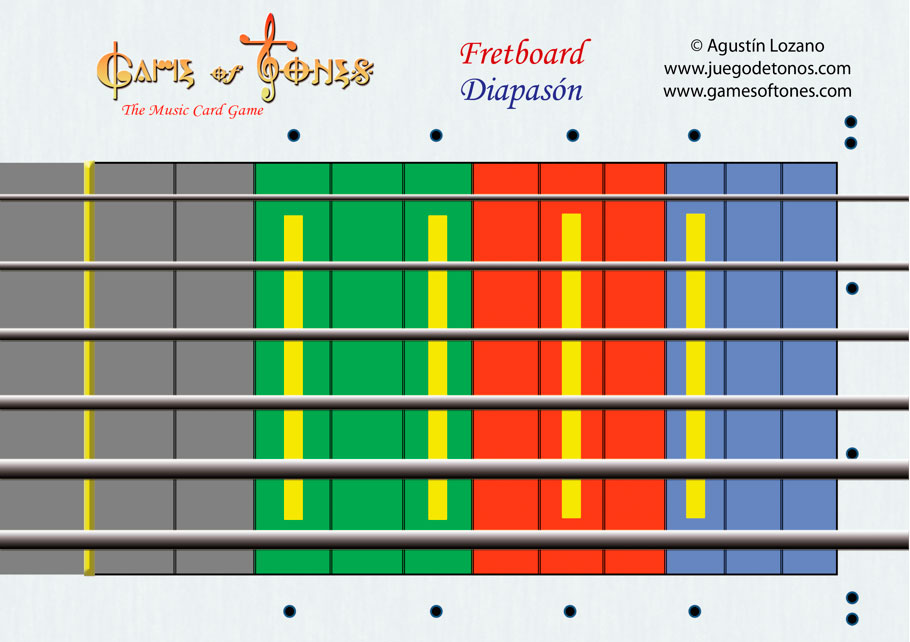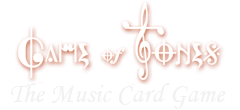If you are interested in getting more information about each of the games (suggested ages, duration, number of players...), you can download the table Summary of the Games
-
Tenuto
An easy game based on the Italian game “Seven and a half”, similar to Blackjack, adapted to learn the rhythmic figures. The goal is to complete a 3x4 measure without exceeding it. No betting!
-
Playback
In this game suited for kids, sometimes you must use a little lie (like singing in playback) to get rid of all the cards. Very easy, strategic and fun, designed to learn the order of the notes.
-
Tutti
A simple game in which you must try to place the notes following the order of notes in the major scales. The Circle of Fifths printed on the cards provides visual aid in this game. The game is recommended to start learning the scales.
-
Da Capo
This game is about capturing cards from the table using at least one of the cards in your hand, and forming chords with them. This game is recommended to start learning to form chords.
-
Presto
In this frantic game you must get rid of cards before your opponents do, placing the cards in musical order without respecting turns. It is an excellent game for learning the intervals. Frantically funny!
-
5x5
In this game for 2 players, or 4 players playing in pairs, you must form scales or chords. A player must complete the tricks horizontally and his opponent vertically, trying to get as many points as possible. It's like a duel, highly addictive for players with previous knowledge of music theory.
-
Interval Dance
In this game, players must be fast in finding intervals or rhythmic figures, according to the mode chosen. The best game for teachers to teach intervals to their students, reecommended for its use in the classroom.
-
Ostinato
A simple memory game, recommended for kids and surprisingly fun for adults, especially when played with chords or scales. At its most basic level is mainly recommended for beginners.
-
Tone!
This is a game of visual perception and symbol association, for beginners or experts. You can play with intervals, chords or scales. Also recommended for teaching purposes, as it can be played with large groups of people.
-
Canon
Classic solitaire-type game in which the player must place all the cards of the Deck on a Foundation, trying to arrange the cards in the Columns forming major scales until they can be moved to the Foundation.
-
Pianogram
The board used for this game symbolizes a pentagram, if placed horizontally; or a piano, if we look at it vertically, with the treble clef on the top side. Each of the squares on the board represents a note, with sharps or flats placed like the keys of a piano. The players must move their pawns through the staff or “teleport “to get the notes required to win the game.

-
Fretboard
This game is designed to learn the location of notes on a guitar or any stringed instrument, with any tuning. The board used for this game represents a fingerboard, starting on the open string and ending on the 11th fret. Each of the spots of the board represents the note played on the fret on that string. This game is designed for string players who wish to learn the notes on the neck in a fun way. It can be played with different modes and goals.

